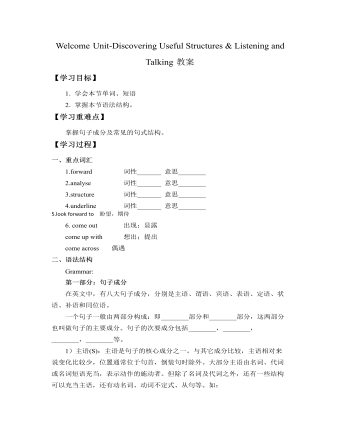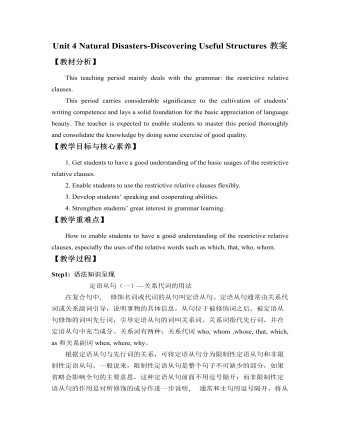新人教版高中英语必修2Unit 5 Music-Discovering Useful Structures教案一
-
- 页数:4页
- 字数:约 5164 字
- 大小:76.03KB
- 格式:.docx
- 版本:Office2016及以上版本
- 作者:南域PPTer
Unit 5 Music-Discovering Useful Structure教案
The past participle as the predicative andadverbial教学设计
This teaching period mainly deals withgrammar “the past participle as the predicative and adverbial.” To begin with, teachers should lead studentsto revise what they have learned about the past participle. And then, teachers move on to stressmore special cases concerning this grammar, such as the “the past participleas the predicative and adverbial.”

This period carries considerable significanceto the cultivation of students’ writing competence and lays a solid foundationfor the basic appreciation of language beauty. The teacher is expected toenable students to master this period thoroughly and consolidate the knowledgeby doing some exercises.
1. Guide studentsto review the basic usagesof the past participle as the predicative and adverbial
2. Lead students to learn to use some special casesconcerning the past participleas the predicative and adverbial flexibly.
3. Strengthen students’great interest in grammar learning.
1. Help students to appreciate the functionof the past participle as the predicative and adverbial in a sentence
2. Instruct students to write essays usingthe past participle as the predicative and adverbial.
The past participle as the predicative andadverbial
Step1:自主探究。
1.(教材P52)Born(bear)in the USA on 2 January 1970, Whitacre began studying music at the Universityof Nevada in 1988.
2.(教材P52)Moved(move) by this music, he said, “It was like seeing color for thefirst time.”
3.(教材P56)Iwas very afraid and I felt so alone and discouraged(discourage).
4.(教材P58)Encouraged(encourage)by this first performance and the positive reaction of the audience, I havecontinued to play the piano and enjoy it more every day.
Step2:语法要点精析。
用法1:过去分词作表语
1).过去分词可放在连系动词be, get, feel, remain, seem, look, become等之后作表语,表示主语所处的状态
Tom was astonished to see asnake moving across the floor.
汤姆很惊讶地看到一条蛇正爬过地板。
Finally the baby felt tiredof playing with those toys.
终于婴儿厌倦了玩那些玩具。
注意:1).过去分词作表语时与被动语态的区别
过去分词作表语时,强调主语所处的状态;而动词的被动语态表示主语是动作的承受者,强调动作。
The library is now closed.(状态)图书馆现在关闭了。
The cup was broken by mylittle sister yesterday.(动作)昨天我妹妹把杯子打碎了。
2)感觉类及物动词的现在分词与过去分词作表语的区别
过去分词作表语多表示人自身的感受或事物自身的状态,常译作“感到……的”;现在分词多表示事物具有的特性,常译作“令人……的”。
We were amazed at what hesaid at the meeting.
我们对他在会上讲的话很是惊讶。
His words were discouraging, whichmade many people discouraged.
他的话令人泄气,使得很多人灰心丧气。
总结:英语中有很多与感觉有关的及物动词,其现在分词表示主动意义,即“令人有某种感觉的”,多用来修饰物;其过去分词表示被动意义,即“人被引起某种感觉的”,多用来指人、人的声音或表情等。
常用的这类词有:exciting/excited astonishing /astonished delighting /delighteddisappointing/disappointed encouraging/encouraged frightening/frightened interesting/interested moving/moved pleased/pleasing
The man standing there looks frightening,and the little boy is frightened.
站在那里的那个人看起来很可怕,小男孩吓着了。
The news was exciting and wewere excited the whole night.
这则消息令人激动,我们激动了整整一晚上。
用法2:过去分词作状语
过去分词作状语的类型
过去分词作状语,可以表示时间、原因、条件、让步、方式/伴随和结果,相当于一个状语从句。其逻辑主语为主句的主语,且与主句主语之间构成逻辑上的被动关系。
1.过去分词作时间状语
过去分词作时间状语时,相当于时间状语从句。可在过去分词前加上连词“when, while, until”等,使其时间意义更明确。
Looked at from a distance, the painting seems much more beautiful.
→When it is looked at from adistance, the painting seems much more beautiful.
当从远处看时,这幅画似乎更美了。
Asked for his views about his teaching job, Philip said he found it very interesting andrewarding.
→When he was asked for his viewsabout his teaching job, Philip said he found it very interesting and rewarding.
当被问到对教学工作的看法时,菲利普说他发现它既有趣又有意义。
2.过去分词作原因状语
过去分词作原因状语时,可转换为由since, because或as引导的原因状语从句,这类状语多放在句子的前半部分。
Worried about the exam, I was unsettled in these days.
→Because I was worried about theexam, I was unsettled in these days.
由于担心考试,我这几天感到不安。
3.过去分词作条件状语
过去分词作条件状语时,可转换为if, once或unless等引导的条件状语从句。
Grown in rich soil, these seeds can grow fast.
→If they are grown in rich soil, theseseeds can grow fast.
如果种在肥沃的土壤里,这些种子能长得很快。
Given a few minutes, I’ll finish the report.
→If I am given a few minutes, I’llfinish the report.
再给我几分钟的时间,我就会完成这个报告。
4.过去分词作让步状语
过去分词作让步状语时,相当于一个以though/although引导的让步状语从句。
Encouraged by his parents, he still has no confidence in overcoming the difficulties.
→Though he was encouraged by hisparents, he still has no confidence in overcoming the difficulties.
尽管受到了父母的鼓励,他仍然没有信心克服困难。
Invited by him, Iwon’t take part in the party.
→Though I was invited by him, Iwon’t take part in the party.
即使被他邀请,我也不会参加聚会。
5.过去分词作方式/伴随状语
过去分词作方式或伴随状语时,通常不能转换为状语从句,但可用并列分句代替。
The patient got off the bed, supportedby the nurse.
→The patient got off the bed, andhe was supported by the nurse.
那个病人在护士的搀扶下下了床。
She accepted the gift, deeplymoved.
→She accepted the gift, and shewas deeply moved.
她接受了礼物,深深地被感动了。
注意:有些过去分词(短语)因来源于系表结构,作状语时不强调被动而重在描述主语的状态。这样的过去分词(短语)常见的有:lost(迷路); seated(坐); hidden(躲); lost/absorbed in(沉溺于); dressed in(穿着); tired of(厌烦)。
您可能喜欢的文档
查看更多
新人教版高中英语必修2Unit 5 Music-Discovering Useful Structures教案二
- 页数:4页
- |大小:68.34KB
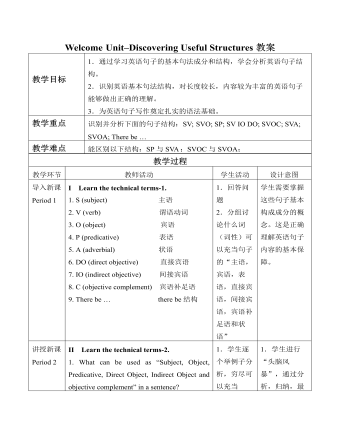
新人教版高中英语必修1Welcome Unit-Discovering Useful Structures教案
- 页数:11页
- |大小:82.15KB

新人教版高中英语必修2Unit 3 The Internet-Discovering Useful Structure教案一
- 页数:5页
- |大小:98.58KB
热门课件教案
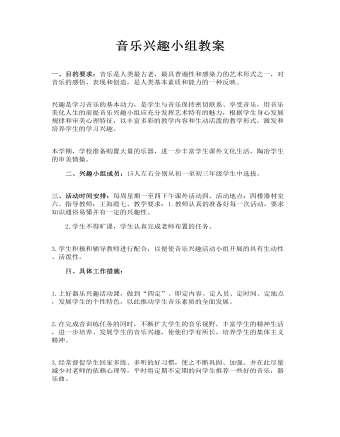
音乐兴趣小组教案
- 页数:5页
- |大小:89.58KB
- 课件教案

精选高中生期末评语
- 页数:42页
- |大小:7M
- 课件教案
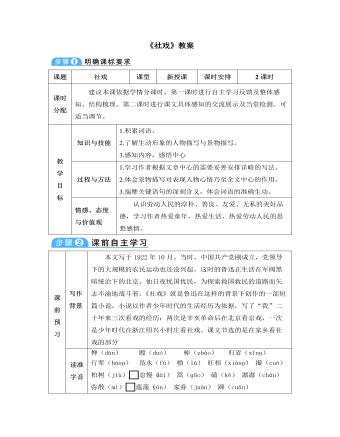
部编版语文八年级下册《社戏》教案
- 页数:8页
- |大小:340.00KB
- 课件教案
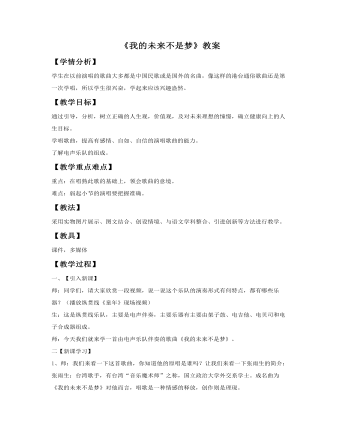
《我的未来不是梦》教案
- 页数:3页
- |大小:30.50KB
- 课件教案
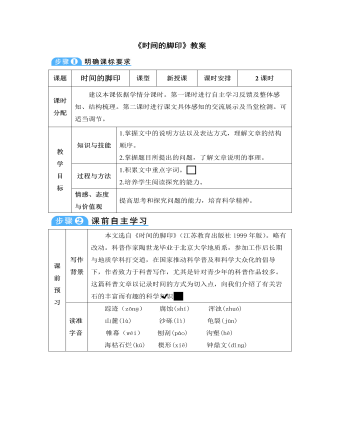
部编版语文八年级下册《时间的脚印》教案
- 页数:4页
- |大小:511.50KB
- 课件教案
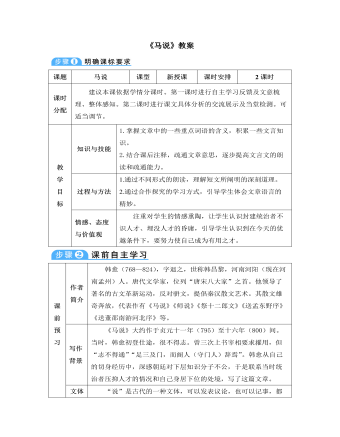
部编版语文八年级下册《马说》教案
- 页数:8页
- |大小:367.50KB
- 课件教案
今日更新

精选高中生期末评语
- 页数:42页
- |大小:7M

××县招商局2024年上半年工作总结
- 页数:12页
- |大小:142.54KB

“四零”承诺服务创建工作总结
- 页数:5页
- |大小:39.83KB
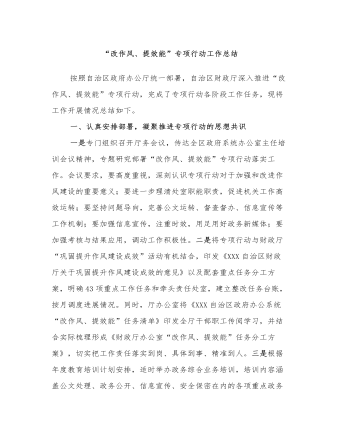
“改作风、提效能”专项行动工作总结
- 页数:6页
- |大小:139.05KB
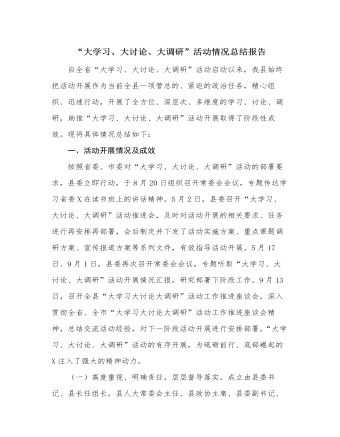
“大学习、大讨论、大调研”活动情况总结报告
- 页数:7页
- |大小:26.12KB
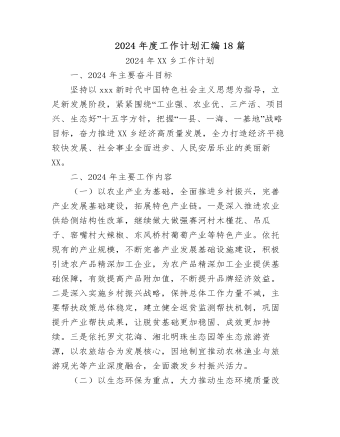
2024年度工作计划汇编(18篇)
- 页数:72页
- |大小:196.93KB
